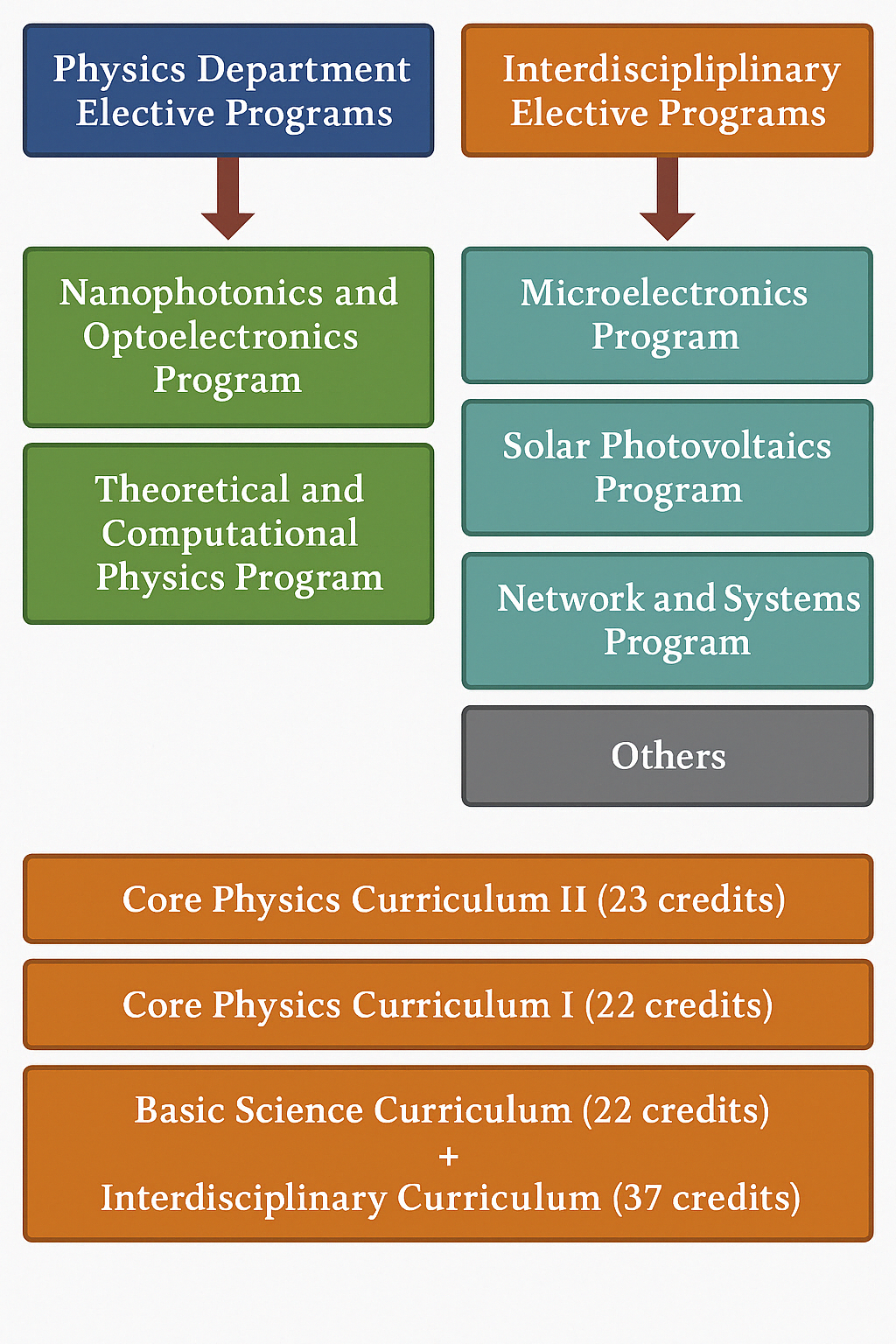Course Introduction
Introduction to the Three Academic Programs of the Department
Description of the Specialized Programs in the Department of Physics:
Nanoscience and Optoelectronics Physics Program
Nanoscience and Surface Physics: This program focuses on the manipulation of nanoparticles, studies of adsorbed atoms and molecules on metal single crystal surfaces, integration of nanotechnology with biological systems, biomedical applications of nanomaterials, and visible-light-activated nanophotocatalysts. These topics directly address core issues in nanotechnology. As material systems become smaller, the proportion of surface atoms increases, making surface properties more critical. Particularly, surface defects significantly affect the physical and chemical properties of nanoparticles, making them a key focus in current research.
Theoretical and Computational Physics Program
Theoretical Physics: This area covers nuclear physics, particle physics, astrophysics and cosmology, and many-body theory (closely related to computational physics). The aim is to explore the fundamental forces of nature, the structure and evolution of the universe, and representations of many-body systems on microscopic and macroscopic scales. Research in theoretical physics utilizes mathematics and logic to uncover physical laws and develop models to explain or predict phenomena in nature. The program emphasizes fundamental physical concepts and the mastery of mathematical tools, aiming to cultivate students' understanding and analytical thinking about the natural world.
Computational Physics: This field includes first-principles calculations, phase transitions and critical phenomena, computational biophysics, and non-equilibrium statistical mechanics. Computational science emerged in the latter half of the 20th century as a new discipline. With increasing computing power, it has become feasible to calculate material properties using simulations. As a result, computational physics now stands alongside theoretical and experimental physics as a core area of research. The future of computational physics lies in large-scale modeling and simulation, using resources like multi-processor or multi-platform systems, and solving complex scientific problems through parallel and distributed algorithms. Its methods are widely applicable across various fields such as biosciences, chemistry, economics, materials science, mechanical, aerospace, and electrical engineering.
Biophysics: Biophysics is an interdisciplinary field that applies the principles and methods of physics, chemistry, biology, and mathematics to study biological systems. Research topics range from molecular-scale investigations to whole biological systems. Examples include organic thin film physics, protein folding, molecular and cellular biophysics, free radical chain reactions in molecular biology, interactions of DNA and RNA within cells, protein synthesis mechanisms, and neural networks. In the 21st century, life sciences, energy technology, and information electronics are expected to profoundly impact humanity and academia. The rise of proteomics and genomics has also opened new possibilities for drug development. Physics provides strong theoretical models and techniques at both microscopic (e.g., single-molecule detection, X-ray crystallography, neutron scattering, mass spectrometry, NMR analysis) and macroscopic levels, contributing to breakthroughs in life science research and innovations in biotechnology. These developments will not only advance academic research but also enhance the national level of biotechnology and lay the foundation for life sciences.
Condensed Matter and Materials Physics Program
This program provides training based on condensed matter physics and materials science, along with supplementary courses related to optoelectronic applications. Areas of study include semiconductors, superconductors, nanotechnology, surface and low-dimensional quantum systems, magnetic materials, functional alloys, surface and nonlinear complex systems. These fields are critical to 21st-century technological development, as many emerging technologies rely on breakthroughs in condensed matter science. Bridging theory and application, condensed matter science integrates engineering and fundamental science and plays a pivotal role in high-tech industries. It underpins major domestic industries in optoelectronics, electronics (semiconductors), communications, information technology, aerospace, and mechanical engineering.

